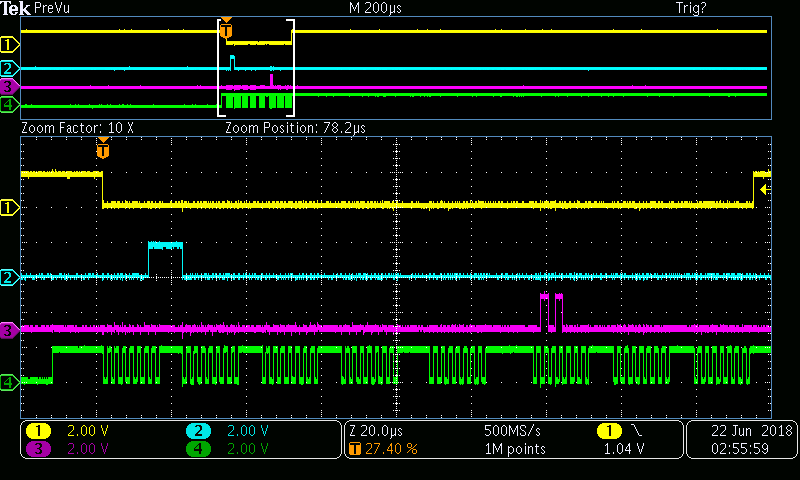Hello,
We are designing a new board with a C6678 which boots from a NOR Flash (S25FS064S). As you can see in the image below, the SPI boot starts, 8 bytes are sent. The first byte sent by the DSP to the Flash is 0x0C which is a read command followed by 4 bytes address (0x00000000). So far everything look good but I don't understand the 3 other bytes from the Flash. After this sequence nothing...
1 -> Chip select
2-> MOSI
3-> MISO
4-> SCLK
After a few seconds, few minutes (delay vary) the DSP finally boots... The power supplies are all good, reset lines are high and input clock is 100MHz. Any idea why this happens or where to search?
Thanks,
Hugo



